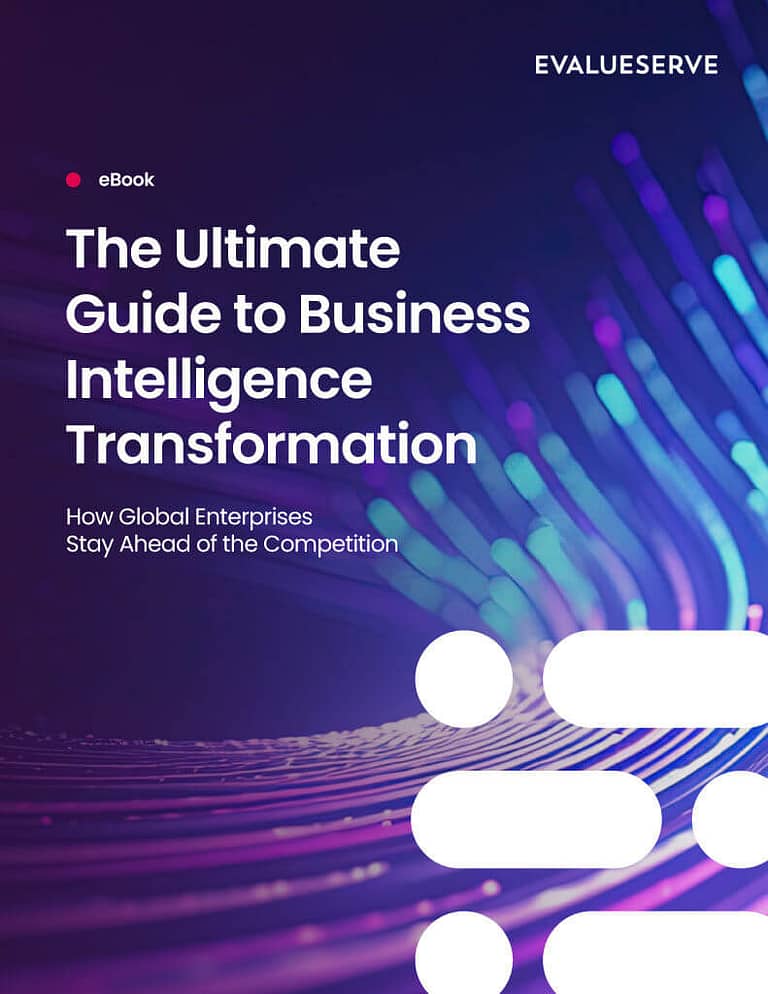Business Intelligence: The Engine of Growth
Business intelligence is a wide-ranging concept that encompasses all the technological and analytic tools a modern company applies to the global pool of business-related data. A business intelligence strategy helps a company narrow their focus on the information that will best serve their corporate goals.
It is a decision to adopt a particular approach, whether prioritising competitors, expanding markets, product development, or some blend of these and other objectives. Given the sheer size of the business data market (estimated to grow from $162 billion in 2021 to $273 billion by 2026) there’s a lot of competition in this arena, and an increasing demand.
Strategizing is important, to avoid wasting time, money, and opportunities. There are several key reasons to devise a business intelligence (BI) strategy:
- It helps you remain competitive, given that your rivals are almost certainly employing BI.
- It helps make better resource use of your marketing, R&D, recruitment, and growth budgets.
- It allows companies to be more agile, pivoting quickly where necessary.
- It reveals hidden opportunities, market gaps, consumer feedback and other key information.
With AI, machine learning and algorithmic analytics ruling the roost in 2023, it’s not just important to develop a strategy for business intelligence; it’s essential.
Understanding the Basics of Business Intelligence Strategy
Let’s make that definition a little more concrete.
Here’s how Gartner’s glossary puts it: “Analytics and business intelligence (ABI) is an umbrella term that includes the applications, infrastructure and tools, and best practices that enable access to and analysis of information to improve and optimize decisions and performance.”
Note that they bundle in analytics, to stress the data-led aspect of BI. They also break down a BI strategy into three components:
- Applications – research solutions, domain specific AI and ML, analytic software, reporting platforms
- Infrastructure and tools – secure storage, web crawlers & bots, data cleaners, validation tools
- Best practice – data hygiene, access privileges, reporting schedules, analytic cadences
Best practice should also include personnel – specialist data analyst partners and domain expertise, for instance. Too many businesses neglect people in favor of software; both are needed.
Business Intelligence Strategies – Different Approaches
Another way to think of the issue is to consider the different approaches one might take to such a strategy. Much will depend on what kind of analytics you adopt.
We’ve found there’s a hierarchy of analysis, running from simplest to most powerful:
- Descriptive analytics: answers the question “what just happened?”
- Diagnostic analytics: digs deeper into why something occurred.
- Predictive analytics: studies trends to map out possible futures.
- Prescriptive analytics: suggests courses of action for likely success.
- Streaming analytics: gives a constant flow of data moment to moment.
We believe streaming analytics are best for business strategy formulation because they explain the past, enrich understanding of the present and set the course for future achievements.
In short, they leave no stone unturned looking for insight.
Aligning business intelligence strategy with organizational goals
Whatever analytic methods you select, it’s vital to start from your corporate goals and choose the BI approach that best fits those ends, rather than letting the tail wag the dog.
Perhaps your company is seeking expansion into overseas markets. You’ll need data analytics which work in multiple languages, potentially including consumer sentiment analysis, so that you can gauge what your new markets want.
Or it could be you’re developing a brand and need to move quickly to fill a market gap. Your business intelligence strategy will need to scour patent applications, trademark and copyright registrations, and keep an eye on rivals’ product launches and press announcements.
It’s rather like buying a new pair of shoes. Your first question should be “what are they for?” unless you aim to go hiking in heels. In other words, your corporate strategy determines your tech procurement, not the other way round.
Business Intelligence Strategy in a Competitive Landscape
In an increasingly challenging economy, devising a BI strategy that’s fit for purpose gives companies the competitive edge they need. Trendspotting is a key benefit of this approach.
As Swapnil Srivastava, Evalueserve’s EVP of Data Analytics told Forbes, “As a business owner and leader, you know that for your business to thrive, you must remain vigilant to current trends and flexible enough to adapt to them.”
Your BI strategy will reveal those trends and give you insights which allow you to take advantage of them, hopefully before your competitors.
Like one of our global pharma client, who improved their epidemiological forecasting and reduced errors by 40%.
Or the Saudi bank whose primary concern was modernization and automation of analytics and reporting. We created a bespoke BI system that led to 50-60% faster reporting and a move away from manual SAS reports.
Or a medical device manufacturer we worked with. We used targeted analytics to predict the coverage, adoption, and price point of a new inhaler product before they launched, backed by a prevalence-based, 10-year US revenue forecast.
In each case, our BI strategy was different, but always led by corporate strategy. In 2021, Forrester recognized our expertise by including us in their Forrester Wave™ celebration of excellence.
As Swapnil Srivastava said when he heard the news “We’re very pleased that Forrester has recognized our domain-specific AI and data analytics solutions. Fortune 1000 companies around the globe trust our ability to identify the correct use cases and turn data into actionable insights that help them make decisions, strengthen processes, and deliver ROI.”
Best Practices for Implementing a Business Intelligence Strategy
Having worked extensively with hundreds of clients seeking to implement a tailored BI strategy, we’ve come up with four major rules of engagement:
1: Buy In. It’s essential to communication the strategic aims and obtain buy-in across all levels of the organization. This ensures resources, budgets, personnel, and time are appropriately allocated.
2: Evaluation. A BI strategy will change over time, as corporate strategy changes with expansion, diversification, acquisition, or other major changes. It’s essential to regularly reappraise your BI strategy and pivot as needed.
3: Flexibility. By partnering with a full spectrum analytics provider, you’ll be able to change direction or strategy with ease, remaining agile and proactive. You also need to be willing to change, of course.
4: Investment. Having identified the resources and partners you’ll need, it’s important to invest proportionately. Don’t try to cut corners here, or you’ll lose the competitive edge.
The flipside is, we’ve also observed companies fail to adopt a BI strategy properly (not our clients, of course). Let’s turn to what we’ve learned from them.
Three Common Mistakes to Avoid Developing a Business Intelligence Strategy
Over-reliance on outdated data – BI moves fast and new technologies are being developed at a remarkable rate. Moore’s Law about processing power seems to have been redeployed for AI. Fall behind and you’ll lose the advantage you’ve worked hard to gain.
2: Lack of flexibility and adaptability – You bought into a strategy and got everyone on board, but it’s not working anymore. The willingness needs to be there to change direction. Fortunately, it’s rarely as difficult as that might seem, so long as you move fast.
3: Failure to communicate the strategy to all stakeholders – You couldn’t get everyone on board, so some divisions are working with outmoded tech stacks which others are using modern analytics. Or, worse still, you decided to shelve the plan for next year. Will you still be here next year?
Business Analytics Strategy: Your Secret Weapon
In the battle to remain competitive, devising a solid business intelligence strategy is paramount. It makes the most of the revolution in data analytics the last decade has enjoyed. It makes your business an innovative, opportunity seizing concern, and protects against risk.
In short, it’s one of the most revolutionary tech investments you could ever make.
If you haven’t yet embarked on your BI strategy, now is a great time to talk to a provider partner.
Evalueserve can help you determine the systems and strategies that best suit your corporate objectives and sector. Talk to us today to get the ball rolling.

eBook
The Ultimate Guide to Business Intelligence Transformation
How Global Enterprises stay ahead of the competition


